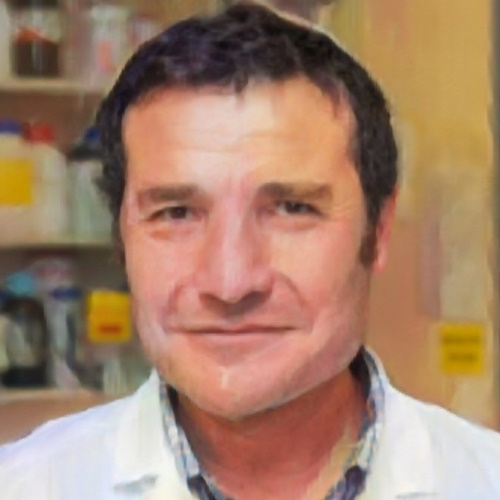In a world where people are living longer than ever before, understanding the science behind healthy ageing has never been more important. With age comes not only wisdom but also increased risk of chronic illness, frailty, and dependency. The pursuit of a longer, healthier life is both a personal and public health goal.
Scientists have long searched for biological mechanisms that could slow down ageing or reduce its negative impacts. While genetics, diet, and environment have all received their share of attention, a new player is stepping into the spotlight: protein acetylation.
Unpacking Acetylation and its Biological Relevance
Protein acetylation is a reversible molecular modification that occurs after a protein has been created. It involves attaching an acetyl group to specific amino acids, typically lysine. This simple chemical change can influence a protein's behavior dramatically, altering how it interacts with other molecules, where it resides within a cell, or how stable it is over time. Because of this broad influence, acetylation is involved in essential cellular processes like gene expression, metabolism, and DNA repair.
What makes acetylation particularly fascinating in the context of ageing is its potential role in regulating how long an organism lives. Recent advances in computational biology and comparative genomics have enabled researchers to explore this possibility with new precision. One of the most comprehensive efforts to date is the development of PHARAOH, a tool designed to track acetylation patterns across mammalian species with diverse lifespans.
Exploring Evolution's Natural Experiment
Throughout evolution, mammals have developed widely varying lifespans. From tiny rodents that survive only a few years to whales and elephants that can live well over a century, nature has provided a vast dataset for understanding longevity. The PHARAOH tool capitalizes on this diversity by analyzing acetylation patterns in 107 different mammalian species. It searches for correlations between specific acetylation changes and lifespan, identifying modifications that are more common in long-lived species.
PHARAOH's analysis focuses on lysine residues, key sites for acetylation. The tool discovered that in many cases, acetylated lysines in short-lived animals are replaced with glutamine or arginine in longer-lived ones. These substitutions mimic a permanently acetylated or deacetylated state, respectively. On the flip side, some long-lived animals have evolved to add new acetylation sites not found in their shorter-lived cousins.
The Functional Importance of These Changes
The shift in acetylation patterns is not random. Many of the affected proteins play crucial roles in mitochondrial function, DNA repair, fatty acid metabolism, and cellular reproduction. These pathways are well-known for their influence on the ageing process. Fixing the acetylation state of key proteins could help maintain their function despite age-related stress, while adding new sites could introduce more flexible regulation.
One particularly compelling example is the enzyme cystathionine beta synthase (CBS), which is involved in producing hydrogen sulfide, a molecule known to support cellular health and longevity. In long-lived species, a specific lysine in CBS is replaced by arginine, increasing the enzyme's activity and boosting hydrogen sulfide levels. This modification is believed to enhance lifespan by promoting cellular resilience.
The Protective Role of DNA Repair Proteins
Another significant finding involves the protein USP10, which helps stabilize other proteins by removing ubiquitin tags. In humans, an acetylation site at position K714 appears to reduce USP10's stabilization of PCNA, a protein involved in cell division and frequently overexpressed in cancer. This suggests that acetylation at this site might protect long-lived animals from cancer by dampening potentially harmful cell proliferation.
Interestingly, the appearance of new acetylation sites seems to be more prominent in long-lived mammals. These sites frequently show up in DNA repair and cell cycle regulation proteins. Given that maintaining genome stability is essential to avoid cancer and other age-related diseases, this trend highlights how evolution may have harnessed acetylation to support long life.
Patterns Across Cell Compartments and Functions
The PHARAOH study also looked at where in the cell these longevity-related acetylation changes occur. Many of the fixed acetylation changes were found in mitochondrial proteins. Mitochondria are powerhouses of the cell, crucial for energy production and metabolic regulation. Because mitochondrial acetylation is largely non-enzymatic and difficult to reverse, fixing these sites may offer a more stable way to manage energy balance and reduce metabolic fluctuations.
By contrast, newly acquired acetylation sites were more likely to be found in the nucleus and extracellular space. This difference may reflect the dynamic needs of regulatory proteins involved in DNA transcription and cell signaling. The ability to reversibly modify these proteins through acetylation gives cells the flexibility to respond to stress, control inflammation, and adjust to metabolic changes.
Implications for Human Ageing and Healthspan
Beyond individual proteins, the study found that many longevity-associated acetylation changes are linked to transcription factors that regulate broader biological pathways. These include factors involved in inflammation control, metabolic processes, and DNA repair—all of which are known to influence how we age. Moreover, many of the proteins affected by these acetylation changes are associated with diseases such as diabetes, liver dysfunction, and various cancers.
This suggests that modulating acetylation could not only help extend lifespan but also delay or prevent age-related diseases. The potential to influence such a wide array of biological functions through a single type of protein modification makes acetylation a promising target for future therapies.
A Dual Strategy in Evolution's Toolbox
The research highlights a dual evolutionary strategy: some acetylation sites have become fixed over time, locking proteins into a beneficial state, while others have emerged as new sites, enabling more nuanced control. This combination of stability and adaptability may be key to how long-lived animals manage the challenges of ageing.
Importantly, not all acetylation sites appear to contribute equally to lifespan extension. Some are involved in basic cellular processes, while others directly influence disease resistance or metabolic efficiency. Understanding which sites matter most could open the door to personalized longevity therapies tailored to an individual's genetic and epigenetic profile.
What Comes Next in Longevity Science
As the field moves forward, identifying the enzymes that add or remove these acetyl groups will be crucial. These include acetyltransferases and deacetylases, some of which are already known to affect ageing in model organisms. For example, overexpressing certain deacetylases like SIRT6 has been shown to extend lifespan in mice. Pinpointing which enzymes regulate the most impactful acetylation sites could lead to targeted interventions to slow ageing.
Moreover, this research underscores the need to look beyond genes and transcripts to the level of protein modifications. Post-translational modifications like acetylation offer a rapid, reversible way to influence protein behavior without altering the underlying genetic code. This flexibility may be particularly valuable in adapting to the many stresses of ageing.
Conclusion: A New Chapter in Ageing Research
This study reveals that the longevity-associated acetylome is a crucial, yet previously underappreciated, layer of biological regulation. By identifying both fixed and dynamic acetylation sites associated with lifespan extension, it provides a roadmap for future research and therapeutic development. As scientists continue to decode this molecular atlas, the dream of extending healthy human lifespan becomes increasingly tangible. In the coming years, protein acetylation could move from a curious molecular detail to a cornerstone of ageing science and longevity medicine.
The study is published in the journal Nature Communications. It was led by H. Y. Cohen from Bar-Ilan University.








